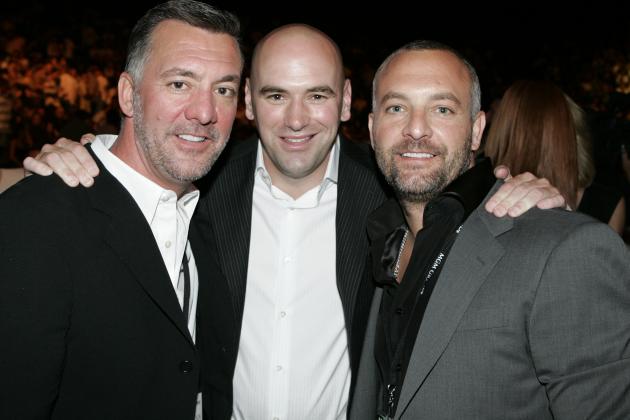Thirty-seven Ultimate Fighting Championship athletes descended on Las Vegas in early November.
They arrived for something called the Athlete Summit. In the old days, the Athlete Summit was known as the Fighter Summit. Back then, the UFC essentially brought the entire contracted roster to Las Vegas. It housed them all at Red Rock, the gleaming centerpiece of the Fertitta family’s—the owners of the UFC—locals-centric casino empire.
Imagine, if you will, over 300 fighters coming together, living together, eating together. Drinking together. The UFC kept them busy during daylight hours with classes designed to help them not make stupid decisions. But at night, after the UFC brass went home, stupid decisions were made. They would congregate at the center bar in the middle of the casino and would drink and generally do what you would expect them to do, which is to say they caused some trouble.
The old Fighter Summit model wasn’t working. The UFC was trying to teach its fighters about paying taxes and being responsible with their money, but it was difficult to really reach them in a sea of so many people. And so the summits were discontinued in 2012.
But now, the summit has returned, only with a different form. This time, the UFC decided to bring in small chunks of the roster at a time, spread out over the course of the year. Smaller groups means it’s easier to communicate with them. The 2015 version of the summit is laid out very much like a conference; in fact, it takes place in Red Rock’s sprawling conference center.
Outside the two rooms where the various classes are taking place hangs a giant banner adorned with larger-than-life photos of Conor McGregor and Ronda Rousey, as if to say: "See these people? These are the people you should aspire to be. These are the people we are looking for."

There are classes on social media, with UFC social media maestro Shanda Maloney teaching the athletes how to responsibly use Twitter and Instagram and other platforms. A company called GuardLab is taking molds of the fighter’s mouths in order to make custom mouthguards. On Monday night, there is a special screening of the ESPN 30 for 30 documentary Broke, and the following morning there is a class on financial management.
The UFC has also brought in representatives from EXOS and Fusionetics. Brett Bartholomew, the EXOS strength and conditioning coach, teaches a class on his favorite subject: training harder, not smarter or longer. After the class, Bartholomew leads a small group of 15 or so fighters—including Sage Northcutt, Cathal Pendred, Brandon Thatch and others—to UFC CEO Lorenzo Fertitta’s subterranean gym.
The gym is across the street from Red Rock, in the basement of the Station Casinos corporate office. Fertitta no longer utilizes the gym, at least not very much, because he has built a gym in his home for his own personal use. But the Red Rock gym is quickly becoming a mecca for top fighters wishing to train in the Las Vegas area. Boxing coach Jimmy Gifford works with many top fighters here on a regular basis, including with flyweight Joseph Benavidez, and Gifford also teaches pure boxing classes here each day.
It is easy to see why the gym is so highly regarded. Every kind of physical fitness tool you can think of is crammed in here, from treadmills and free weights to a boxing ring and an expensive cryotherapy chamber. There is a refrigerator filled with myriad flavors of protein shakes. The walls are covered with autographs of UFC fighters and others who have visited here; underneath Conor McGregor’s signature, he scrawled “P4P #1,” which probably felt like wishful thinking at the time. Freddie Roach signed the wall. So did Flavor Flav.

It takes all types.
Bartholomew separates the fighters into two groups. He takes one group, and another EXOS coach leads the other. Bartholomew leads his group into a small parking garage where a shining Mercedes is the least expensive car.
Lining the fighters up into rows of four, he begins leading them through warm-up drills that take up the length of the garage, explaining why they are doing what they are doing and why it is beneficial. They lunge. They lift their knees high, rotating them outward as they move.
Finally, they jump high in the air with both feet as they move down the garage.
“This one is about telling your body that it’s just about time to work,” Bartholomew yells. “It activates that center core and gets it ready to go.”
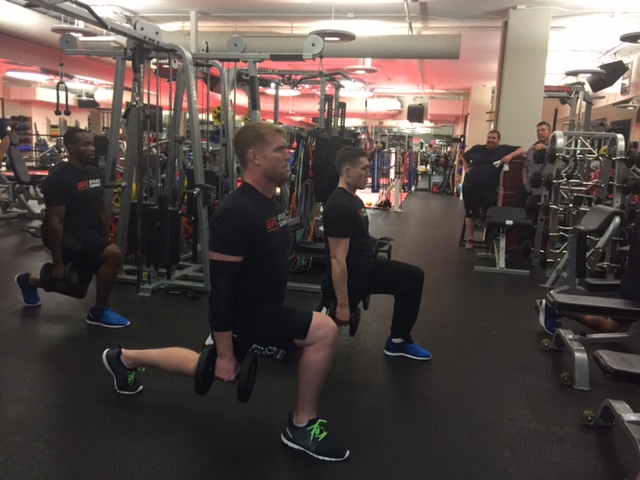
With warm-ups complete, Bartholomew leads his group back into the gym and begins teaching them a circuit that consists of push-ups, squats and lunges. It is not rocket science. Much of what EXOS does with athletes can be found in any CrossFit gym around the country. It is circuit-based and designed to create functional strength with short, efficient workouts.
The UFC has partnered with EXOS because these types of workouts are not the norm in mixed martial arts gyms. There is still a belief in many places that pushing yourself beyond your limits on a daily basis is the only way to prepare for a fight, not to mention the kind of sparring sessions that so often lead to injuries.
But this attitude is slowly changing. Northcutt, a 19-year-old phenom athlete, may very well be the blueprint for what the UFC hopes is the fighter of the future. He does not go through a training camp. He does not spar in preparation for his fights. His father, Mark, who has been Sage’s main trainer since he was four years old, believes there is no reason to take punishment in practice.
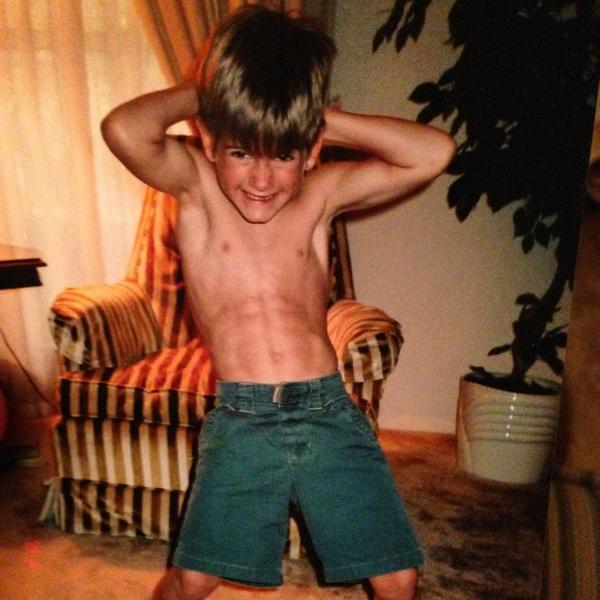
He does not allow Sage to overtrain his body; since he sees his son every single day, he’s able to tell if his son should dial back his efforts in order to conserve energy. During a recent trip to the famed Tristar Gym in Montreal, Northcutt began tiring after a few days. He has cardio for days—he can run a sub-five-minute mile, and his father says he can fight five five-minute rounds without breaking a sweat—but the pace of Tristar’s training was more than he was used to handling.
That difference in training style is why Northcutt won’t be utilizing Tristar to prepare for his December 10 fight against Cody Pfister. His father is worried about allowing Sage to go to Canada without being there to monitor him. He’s afraid Sage would return from training without his usual levels of energy, and that could affect him greatly in the fight.
Northcutt’s main training regimen includes a heavy weights program developed by his father. They work out together nearly every day at a Lifetime Fitness in Katy, Texas, their hometown just outside of Houston. It is a highly unusual program for a mixed martial artist, but it works. Northcutt is an unparalleled athlete. When Bartholomew yells out for the fighters to begin the circuit he’s just taught them, Northcutt explodes into action. He is strong and fast, and he looks as though he is having the best time of his life. He finishes his circuit long before the other fighters complete theirs.
The revamped Athlete Summit is one tool in the UFC’s arsenal for creating smarter, better, more responsible fighters. It is the UFC’s hope that the fighter of the future will be more equipped to handle him or herself, both in the Octagon and in the real world. It is an idealistic thing, and if it works, the UFC should be viewed as a more professional sporting organization, because the company has realized that this is no longer the Wild West of fighting. In order to be taken seriously among the NFLs and NBAs of the world, the company must present a professional image.
That’s part of it, and it’s why the athletes are screened a documentary about broke athletes. It is why they are each given a detailed body mechanics scan from a firm called Fusionetics. It's why the UFC entered into a partnership with the Detroit Pistons, one that saw the entire Pistons team—including superstar Andre Drummond—travel to Las Vegas for a week of training at the Ultimate Fighter gym with Forrest Griffin, women’s strawweight champion Joanna Jedrzejczyk and others.
But the other part—the reason Fusionetics and EXOS are really here, in the early chill of Las Vegas winter—is injuries.
A few years ago, the UFC experienced a financial down year.
They weren’t able to hit the fiscal goals they’d forecasted at the start of the year, and they weren’t sure why. They’d just signed a television deal with the FOX network. Pay per view was doing just fine, though down from the peak years they’d experienced when current WWE superstar Brock Lesnar was in the fold. In short, there was no reason they should have fallen short of their goal, and yet they did.
For Lawrence Epstein, UFC executive vice president and chief operating officer, this was a watershed moment.
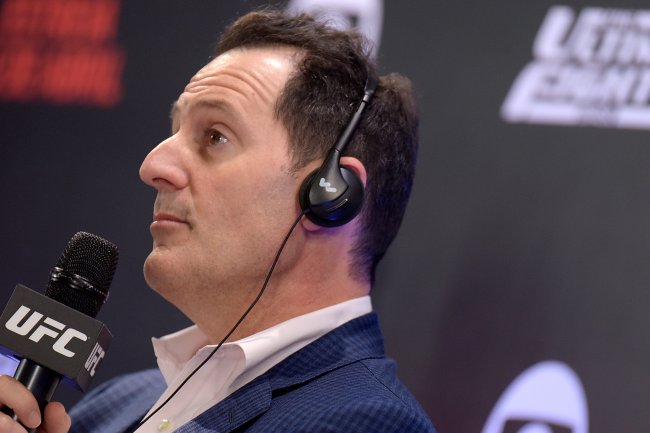
"We looked back and said, 'what have we done wrong.’ Did we make the wrong TV deal? No. We went through all the decisions we made, and we'd made the right ones,” Epstein told Bleacher Report. “But what we discovered was that the thing that was affecting our business was outside of our control. It was injuries."
Injuries affect far more than just the fan who experiences heavy disappointment when a much-anticipated main event falls through. The chain reaction at Zuffa’s office is costly and strenuous. The matchmakers are tasked with finding a fighter willing to replace the injured one, if a willing replacement can be found at all. The video production team, led by Craig Borsari, must recreate hundreds of video assets that were designed to sell a fight that’s now non-existent. The graphics department has to re-do sometimes hundreds of pieces of art assets, from the official fight poster all the way down to those tiny images the UFC uses as social media bait. And the social media team has to revise their entire strategy for the event.
Needless to say, it is a costly affair beyond general fan dismay alone. That year—the one when the promotion realized they needed to do something about all the problematic injuries—according to company officials, the promotion lost multiple millions of dollars from the cost of injuries alone.
The executives at the UFC realized something needed to be done about the problem. They needed a solution that would not just fix the current monetary troubles they were experiencing, but something that would also help set a trend that would point the entire sport in a new, long-term direction.
They brainstormed. At the end of last year, Epstein and Garry Cook, the former Manchester City executive who is now the UFC's chief global brand officer, approached UFC vice president of public relations Dave Sholler with an offer: they wanted Sholler to work with former WEC owner Reed Harris and the new Athlete Development team to help create a marketing and development program that would help not just current athletes, but any future athletes the UFC may sign as well.
The goal was to begin shepherding a fighter from the moment they entered the UFC, to help the prepare not just for the career they were about to experience, but for life once that career was no longer a feasible option.
"The goal from the onset has been to create a pathway from the moment they arrive to the moment they exit," Sholler said. The new, trimmed-down Athlete Summits began in June, and the UFC also began conducting miniature versions of the Summits for each incoming cast of The Ultimate Fighter.
"They get to learn what to expect when they make it to the UFC. They get experience on social media and PR. They get financial advice. We try to arm them with the tools they need," Sholler said. "But one of the areas we really wanted to get on the forefront of was injury prevention and performance maximization."
The UFC knew how its fighters trained. What they wanted to know was: should they be training this way? Or was there a smarter and more efficient way that would help protect their health while also improving the UFC's bottom line?
"Fighters equate success in training with how many miles they can run, or how long they can spar," Sholler said. "We were trying to understand what a true training camp should look like."
It has been no secret that many mixed martial arts gyms around the world lack such knowledge; most of them, in fact, seem stuck in the stone ages. They train harder instead of smarter. They spend countless rounds sparring in preparation for an upcoming fight, and believe in the old notion that, in order to prepare for a real fight, the fighter must undergo actual fights in the gym.
It has been this way since mixed martial arts gyms began popping up around the country in the 1990's.
"It really started with us saying 'let’s go in there and beat each other up, and the strongest will survive. People have figured out that maybe that’s not the best idea. If you’re sparring with other guys your level, real elite guys, would an elite pro boxer ever do that? No. They wouldn’t," said UFC Hall of Fame member Griffin. "That kind of becomes the downfall of the supercamp. You have so many good athletes, alpha males, who want to win in practice. You know, winning in practice is a good thing for your confidence. But you end up beating each other up and hurting each other."
Griffin, in fact, directly attributes the hard sparring he did early on for shortening his career.
"I did so many things wrong. It’s upsetting to me. I surrounded myself with good people that told me what to do. But I was too stubborn. I should have found other people to tell me what to do," Griffin said. "Towards the end, I kinda figured it out. But by then, the damage was done. I’d taken a lot of shots. My chin was not what it was in my 20’s. I’d put a lot of miles on my body before I figured out that it wasn’t the best strategy."
"The actual injuries that happen on fight nights are minimal. It’s what happens in-between that causes it," said middleweight Elias Theodoreu. "Unfortunately, some people are not as caught up as others."
"Too many people are looking for the kill shot these days," said middleweight title contender Luke Rockhold.
This intensive training style—with a fighter sometimes spending 5 rounds facing fresh opponents who cycle in each round—is pervasive in mixed martial arts. The most recent incident of a fighter getting hurt late in his camp came in October, when Joseph Duffy—who was scheduled to fight Dustin Poirier in Dublin—was forced to withdraw just a few days prior to the fight. The previous week, Duffy had suffered a knockout blow during sparring.
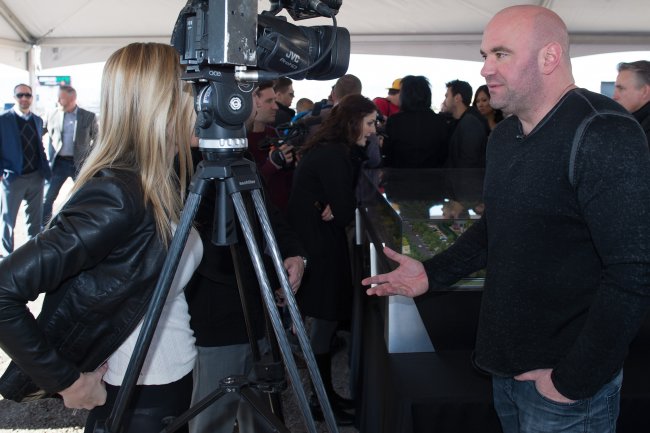
“I wouldn’t have thought it was possible for every fighter to fall off a card,” UFC president Dana White said. “But now I know it’s possible.”
Current UFC fighters such as lightweight Scott Holtzman have seen the effects such training has on their bodies, and are beginning to change the style of training they undergo as a result.
"You need to spar a little bit to find out what you’re made of. But for me, I’m definitely looking at sparring less. Sparring leads to injuries. You have to get in there and mix it up a little bit when you're first starting out," Holtzman said. "But there are more injuries when you spar harder. I think MMA is evolving. I’m not sparring as much as I used to. I need to make it to the Octagon to get my paycheck."
Rockhold said he still does 2 days of hard sparring every week—sometimes 3 if he feels the need—but he's not going in the gym and waging war with teammates Daniel Cormier or Cain Velasquez. Rockhold said he tries to train smart and avoid taking big shots, but he has still fallen victim to overtraining.
"We’ve all pushed ourselves beyond the limit. You can feel it. That’s the main culprit of injuries, people not listening to their bodies. Your body can only take so much," Rockhold said. "I’ve done that. I’ve felt my body give. But I’m smarter these days. If I need to take a day off, I’ll take a day off."
Former welterweight champion Matt Hughes, who attended the Athlete Summit to speak to the fighters, said that his days of going full-bore at the legendary Miletich Fighting Systems gym in Iowa may have been all he knew at the time, but in hindsight may have been a shortened his time as an active fighter.
"We didn’t have any type of science. We just had trial and error. I had been wrestling my whole life, trying to get in shape. Pat's was essentially a wrestling room, and that’s how we went at it," Hughes said.
And yet, when multiple fighters asked Griffin and Hughes during the Summit if all of the hard training days were worth it, both retired fighters said yes.
"I would have been easier on the sparring, though," Hughes said.
Identifying the problem has been the easy part. Changing a decades-old mindset? That's the tough part. Because it's one thing to bring a group of fighters to Las Vegas and put them up in a fancy hotel and teach them fancy exercises and show them how sensitive their brains really are. It is another thing entirely to send them home and expect them to immediately affect real change in the gym.
"It’s a challenge," Epstein said. "There’s no doubt about it."
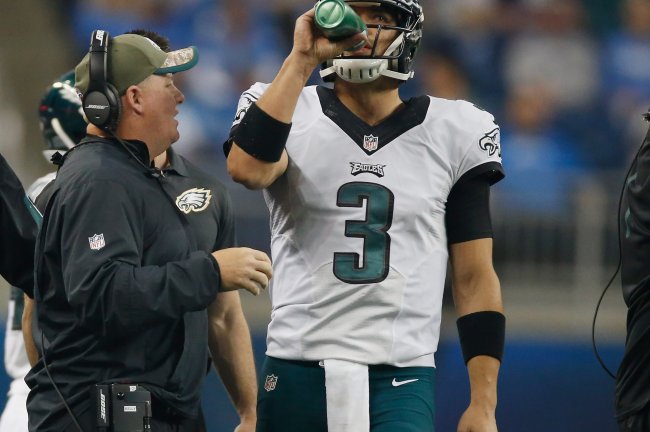
Sholler and other UFC officials began talking to outside firms and other sports organizations to try and figure out how to improve the training conditions of their athletes. They met with Chip Kelly's staff at the Philadelphia Eagles training compound. They went to various coaching summits. They visited the world-class training center of Manchester City football club in England. And they sent a team to Exos, a reputable training center in Phoenix with a client roster boasting many current NFL stars.
Exos, founded as Athlete's Performance in 1999, is a world-renowned training center in Phoenix that counts many NFL stars among its clientele. Back in the 1990's, training was a fragmented thing; you'd have different training services handling strength and conditioning, explosiveness, nutrition, physical therapy and more. The problem, as if often is, was communication. With separate companies handling each duty, there was little to no communication between them about how to handle each athlete. This was a detriment.
Exos was created with the idea of bringing each of these aspects under the roof of a single world-class training center, with staff members able to handle every aspect of athletic performance and, mostly importantly, with open communication between them. Bartholomew said the results were nearly instantaneous.
"We had no fragmented plans schedules. There were no alternative agendas that led to suboptimal results," Bartholomew said.
Bartholomew had a boxing background, and so he followed the rise of mixed martial arts a decade ago. As the sport grew more popular, he began noticing people uploading YouTube videos of purported fighter training circuits. He watched some of them, and instantly realized they were all wrong.
"It was really randomized chaos. None of it was organized. That stuff increases the likelihood of injury, even in a chaotic sport like MMA," Bartholomew said. "No fighters go in the Octagon and say they’re going to wing it. But that’s what so many of them do during their workouts. They’re getting themselves tired and beating themselves up in training, thinking that will transfer to the Octagon. And that’s just not the reality."
And so Bartholomew was familiar with the sport when the UFC approached Exos, looking for a way to improve the way its fighters go about getting ready for a fight and to help stem the tide of injuries they faced. What he wasn't familiar with, however, was the monetary losses that went along with those injuries.
"We heard about the millions upon millions of dollars they were forfeiting due to injuries," Bartholomew said. "Every other sport has faced the same questions, though, so it was not a surprise."
Exos CEO Trent Wilfinger and Bartholomew began working to develop a plan for UFC athletes. They are; they are not mixed martial arts trainers. Their job, Bartholomew said, was not to help fighters more safely simulate fight conditions. That was up to their coaches.
"My job is to strengthen the energy systems involved with that sport so that every part of their body is stable and strong so they can absorb forces from other people and impart their own forces on other people," Bartholomew said. "Strength is a quality that reinforces health and durability. If strength didn’t have a place in sports, nobody would be testing for performance enhancing drugs.
"It's about performance training. The athlete needs to train in a way that will directly affect what they are doing in the Octagon," Epstein said. "It's great to be able to be able to do 100 pull-ups. But does that make you a better UFC athlete?"
This summer, the UFC sent a small group of athletes—consisting of Rockhold, Griffin, CM Punk, Aljamain Sterling and others—to the Exos facility. They were the first "test batch," the first group of UFC athletes who would experience what could ultimately be the training sessions all future UFC athletes will undergo.
For five days, the Exos team led the UFC fighters in myriad drills designed to strengthen all of the functional muscles needed for optimal performance in the cage. Some of the fighters familiar with the training methods. But for some, it was a revelation.
"I liked the different kind of workouts and the science behind them," Rockhold said. "I’m not a heavy lifter. I’m more about the body mechanics and the structure. Balance, agility, explosiveness rather than just heavy weight lifting. The warm ups and the cool downs. Taking care of your body in other ways. It was definitely a different outlook."
After the initial group went through the training program in Phoenix, Bartholomew and other Exos reps began attending the Athlete Summit to show attendees a condensed version of the program they'd put the initial group through. They focused on teaching the fighters how to properly warm up their bodies, and how to cool them down. Both are important for injury prevention.
Back at Red Rock's massive conference center, each Summit attendee went through a scan from Fusionetics. They are instructed to lie flat on their back on a massage table, and a Fusionetics rep begins by rotating their ankles, then flexing them far out to the left and right. He gives a flexibility rating to an assistant. Then he begins working his way up the body. After, the athlete is instructed to stand against the wall and turn their head to each side, which gives more ratings. They squat as low as they can go; more ratings. And then they squat with their heels on two small 2x4's on the ground for yet another rating.
After the process, the Fusionetics rep gives them a flexibility score for each of their joints and an overall score. These numbers give Fusionetics the ability to identify problem areas. One fighter—who is scheduled to fight on a December UFC card—is told he may have an ankle problem that he did not previously know about.
After going through the process, I am shocked to find out that I am far more flexible than I thought I would be. I am average, which sounds like perfection to my ears; I'd expected to be told I was a walking train wreck.
At the end, the fighter is logged into Fusionetics' proprietary system, and it blurts out a program to help correct problematic areas. The fighter is told to download the Fusionetics app on their phone. They are able to log in to the app, see their complete ratings, and then view the program that will help correct their problem areas. Looking at my personal program on the app, I see that I need to use a stiff foam roller on much of my lower torso. The app displays video tutorials for how to do each movement.
The working idea is that Fusionetics will set a baseline for each fighter, and then re-test them at UFC events in the future to see if they've made improvement. It is about fixing problem areas, but it is also about injury prevention. If Fusionetics can identify potential injuries before they happen, the athlete can correct them and avoid injury altogether.
After being walked through how to use the app, each fighter gets back on the table for some joint manipulation and deep tissue massage. After the Fusionetics rep works on my horrific right ankle—I suffered two bad sprains there in high school, and my flexibility is almost zero—he re-measures my range of motion.
It has improved by nearly ten points.
During his own session, flyweight Dustin Ortiz paid rapt attention to the Fusionetics rep. Where some fighters will forget what they learned from these sessions immediately upon leaving Las Vegas, Ortiz—an analytical fighter who prefers raw numbers to gut feelings any day of the week—said he plans on taking the Fusionetics suggestions and incorporating them immediately into his training schedule.
"It's great stuff. I knew I had less mobility in my shoulder from my wrestling days, but it's great to see it on paper," Ortiz said. "It's even better that they give us a plan to fix those issues. I'm going to start as soon as I get back to my hotel room."
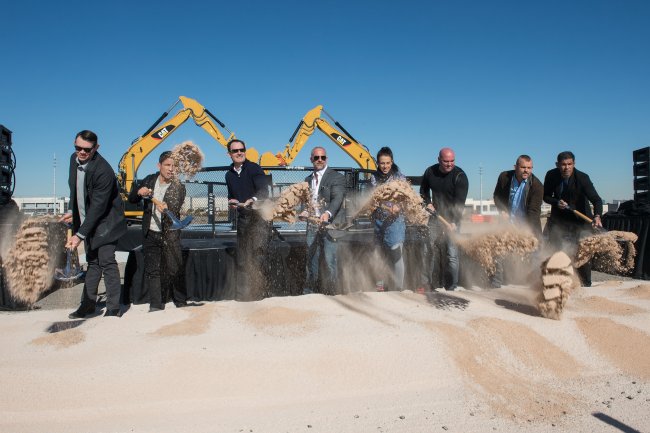
All of these things, from Fusionetics to Exos to the new drug testing program run by the United States Anti-Doping Agency, are about laying the groundwork for a different level of athlete in the future.
But they are also an important learning experience for the UFC.
On December 1st, the promotion broke ground on its new multi-million dollar, 180,000 square foot office and training complex in Las Vegas. The company flew in approximately 90% of its employees from around the world and then bused them to a dusty lot on the corner of 215 and South Torrey Pines. Two cranes set facing each other with a giant UFC logo painted on the ground underneath it. Centered between them is an Octagon, and in front is a stage and a pile of dirt that serves as the ceremonial groundbreaking location.
According to Fertitta, the new complex is roughly scheduled to open in February 2017. And the UFC is taking everything they are learning from their new outside partners; the plan is to incorporate this new knowledge into a world-class athletic facility, available to any fighter on the UFC roster at any time of the day, that will include a rehabilitation facility, strength and conditioning center and much more. This new athletic center will take up 40,000 square feet of the total complex.

The complex is stunning. The recovery room is lined with roughly-hewn bricks. There are hot tubs everywhere. There is a massive gym with, quite literally, every piece of workout equipment you can imagine, and some you probably cannot. There is a world-class rehabilitation center. The UFC spent a lot of time and money researching this stuff, and standing here, looking at a miniature model of the full thing is enough to make you realize: this is indeed the future, and the future appears to have everything needed for healthy, stable athletes.
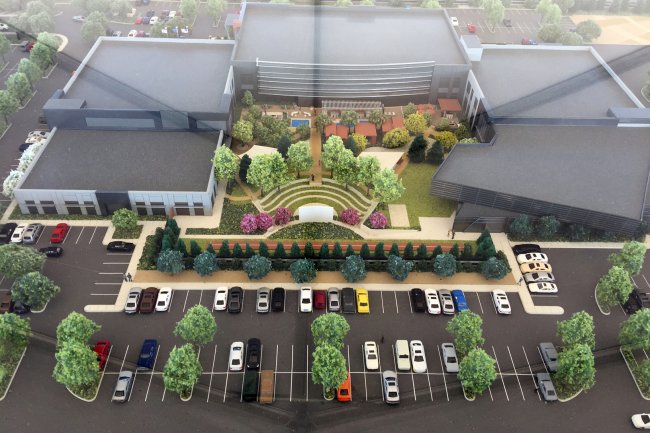
"This is about identifying partners to play a role in that facility," Sholler said. "We're looking for a better understanding of how our fighters may be increasing their injury risk, and how we can fix those areas."
"This space is very dynamic and changing. But certain things are consistent throughout this. We have to be able to change and accommodate different techniques," Epstein said. "There might be better things coming along in the future. The new complex is going to be a physical space. But more importantly, it’s a marketplace of ideas where athletes and trainers can come in and train at our facility and then take it back to Florida or Brazil or Asia. They can take those things and positively affect their environments."
Theodoreu believes the UFC's investment in the Exos and Fusionetics programs, along with the new training complex, is a sign that the UFC is carefully investing in the longevity of its product. Yes, they're protecting their bottom line; after all, these changes were spurred on by the loss of money.
But there's more to it than just a quick fix to a leaky bank account.
"It shows that they want the best for us," he said. "Obviously they’re investing in us as a product, but it shows they also care about our long-term health."
The Exos classes and Fusionetics sessions are a great tool for teaching fighters how they should be training. It is an important new tool in the UFC's arsenal. But in order for these new things to become a revolution, and in order for it to have a true lasting impact on the sport as a whole, they must be taught to coaches, because there will be no trickle-down effect at the gyms where fighters actually train without the people in charge.
The UFC hopes to send top coaches to Exos to learn, but it is a lot more difficult just promising them a few free days in Phoenix. Many of these people are set in their ways, and it will be difficult to unseat years of patterns and traditions.
"The athletes themselves, part of you just wants to go harder, to do another round. You need a coach that has a plan. In boxing, they’ll have it planned out, like they’re going to do 60 rounds of sparring before an upcoming fight, and that’s it," Griffin said. "But in MMA, it’s different. You show up each day and do as much as you can that day. And that becomes a problem."
Many fighters will tell you that it's not possible to prepare for a fight without having a fight in the gym. This is an ages-old mixed martial arts truism that probably dates back to the days when Miletich Fighting Systems, Ken Shamrock's Lion’s Den and other such gyms set the standard for training sessions.
But times are changing. Northcutt and others are part of a new breed of fighter that rarely, if ever, experience hard sparring sessions during training camp. Hughes said that one of his former Miletich teammates even drastically cut back on sparring, and he seems to be doing okay with his career.
"Robbie Lawler has done that," Hughes said of the welterweight champion. "He doesn’t spar nearly as much now." Instead, Lawler saves his chin and brain for classics like the one from earlier this year with Rory MacDonald.
There's a bit of MMA logic that goes something like this: why damage your brain during practice when you need it for a real fight?
It seems so simple when you say it out loud, but the truth is that it is a foreign notion even today in camps like Nova Unaio, where brutal battles are fought between friends long before they walk to the Octagon. And it seems on the surface that the cost—of pulling out of a fight, missing a paycheck, stagnating your career for months and years on end—is so much greater than the need to prove yourself in the gym.
Thankfully, UFC stars are slowly beginning to think of themselves as athletes rather than fighters of the "just bleed" ilk. They're hiring nutritionists and recovery specialists and strength & conditioning coaches. They're formulating daily game plans instead of just pulling up to the gym, walking inside and doing as much as they possibly can until they feel their bodies breaking down.
"We need it laid out in front of us," Holtzman said. "We’re blue collar workers sometimes. Some guys are smarter than others."
Even the veterans, the men who were the living embodiment of these types of training sessions, are starting to believe it's possible to prepare for a fight without pushing yourself beyond reasonable limits in the gym. Griffin said he still believes in the need to see full-speed sparring at least once a week, but that fighters should see it in a more controlled environment.
"You just have to know your body and you have to work with professionals and have a game plan," he said. "A bodybuilder would never do an extra set if it felt bad. If he was struggling he would stop because he knows he’s doing more damage. He’s doing more harm than good."
But perhaps even more importantly, Griffin said he believes it is imperative that fighters treat themselves as athletes. A large percentage of fighters work hard to get in fantastic shape during fight camps, but then let themselves go when the fighting is done. They'll play video games and eat everything in sight and, while most of them never truly get out of shape the way the rest of us do, they're not in anything approaching optimal athletic condition, either.
Thirteen of the twenty-four fighters interviewed for this story admitted to "letting themselves go" outside of training camps. That is a mentality that needs to change.
"Once you get injured, your likelihood of injury becomes extremely high. You get out of shape, and then you try to get back into camp and then you hurt something else," Griffin said. "An easy fix is for guys to keep their weight low and their activity level high between camps. You can’t just train in a camp. You have to be doing a little something every day. You can improve your skill set without getting beat up. And that’s something I never really did."
Injuries will not vanish overnight. Fighters will continue to spar far more often than they should. Coaches will continue to push them long past the breaking point in the mistaken belief that they are doing something beneficial for their pupils. Big money fights will continue to circle the drain and then disappear. And careers will continue to be cut short.
But at least something is being done about the plague of injuries that has crushed the hopes of fans and shortened careers for years. None of these things are immediate fixes, but the UFC is slowly laying the groundwork for a future generation of athletes that trains smarter and yet accomplishes more. And while injuries may never fully disappear—this is still the fight game, after all—at least an effort is being made to bring mixed martial arts training up to the same quality level as the National Football League and other world-class sporting organizations.
"I may be a little biased, but I think our athletes are the pinnacle of sport. Other athletes aspire to be our athletes and have the same kind of determination our athletes have," Epstein said. "These guys are not fighters. They are the most elite athletes in sport. And that’s why we are doing this.
"We want to provide these resources to them so they can perform at the highest level. There’s going to be a transition period. There’s some wisdom to the old ways. But there are things that can be done better, and we're going to do them better."
